 Cover Story
Cover StoryAll Together Now
Developing a whole-brain philosophy and culture
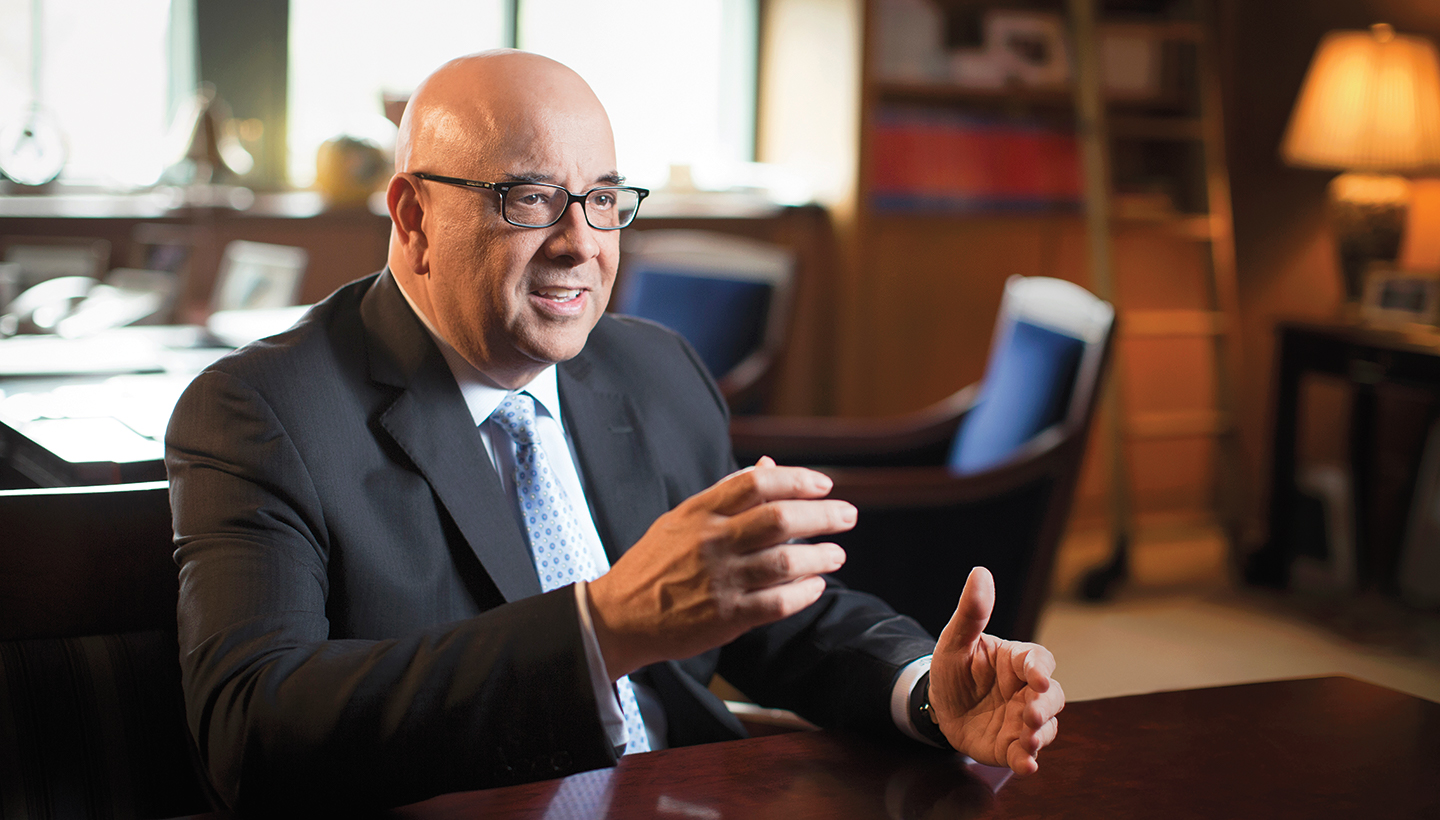
In 2004, Julio M. Ottino had what he thought was his dream job—and it wasn’t dean of Northwestern Engineering. After decades of success as a chemical engineering professor known for his work in complexity and fluid dynamics, Ottino had cofounded and become the director of the new Northwestern Institute on Complex Systems. Ottino aimed to create a hub of research that would cross academic boundaries to uncover the fundamental principles that govern complex systems and to connect the researchers who were developing concepts and tools with the users of those advances.
At this same time, Ottino was also serving on the second search committee to find the next dean of the McCormick School of Engineering after the first failed to produce a candidate. When—despite his own efforts—the committee failed to find the right candidate, it became clear that the search needed to turn inward. Ottino was offered the job. “I did not want it,” he says. Ultimately, he accepted. With his mind still tuned toward complexity research, the idea of a different kind of educational leadership began forming in his mind.
Ottino envisioned himself leading a school that thrived on interconnectivity and new ways of thinking. But in 2005, that kind of school was still a dream. The McCormick School of Engineering was well regarded but siloed within itself and from other schools at Northwestern.
As a leader, Ottino hoped to take what he learned in his study of complex systems—namely, the importance of networks and emergence—and apply it to the engineering school. Northwestern itself had a broad, rich array of distinguished faculty and whipsmart students, but the disciplines didn’t talk to each other.
As quoted by the Daily Northwestern months before starting the job in 2005, Ottino said, “If McCormick were like an orchestra… we have very gifted individual players, but we have to produce great music by producing a more unified sound. We don’t have the altogetherness kind of aspect (yet).”
The time was right to grow the network.
If I had to encapsulate my philosophy, it may be ‘seeing and exploiting connections.’Dean, Robert R. McCormick School of Engineering and Applied Science
“If I had to encapsulate my philosophy, it may be ‘seeing and exploiting connections,’” Ottino says. “I thought, ‘Shouldn’t we do something for the faculty and students here to be enriched by the network and, in the process, enrich the network as well?’”
The network grew swiftly. Two important nodes at the school were established early in his tenure: the Segal Design Institute, which educates design thinkers through immersive, interdisciplinary programs, and the Farley Center for Entrepreneurship and Innovation, which brings together disciplines to teach the entire innovation lifecycle. Both were springboards to connect faculty and students to other schools at Northwestern—a consistent priority during Ottino’s tenure—and their success laid the foundation for new courses, programs, and initiatives that reach almost every discipline.
I wanted to change the culture of the place. But to do so, I didn’t create a map that tells you how to get from A to B to C. Instead, I worked to create a compass that could guide us.
Julio M. OttinoDean, McCormick School of Engineering and Applied Science
“I wanted to change the culture of the place,” he says. “But to do so, I didn’t create a map that tells you how to get from A to B to C. Instead, I worked to create a compass that could guide us."
The compass encouraged networks to form naturally, by supporting faculty to pursue multidisciplinary research projects, giving students the resources they needed to form new student groups, and laying the foundation for new kinds of experiential courses and degrees that brought together students from different fields and taught them to think in new ways.
That sort of thinking has resonated across the University, where Ottino has found many partners in his vision.
“At Kellogg, we encourage our students to experiment and learn multiple skills,” says Francesca Cornelli, dean of the Kellogg School of Management. “The world is complex and nonlinear, and to be successful they need to transcend specialization and be able to use multiple skills simultaneously.
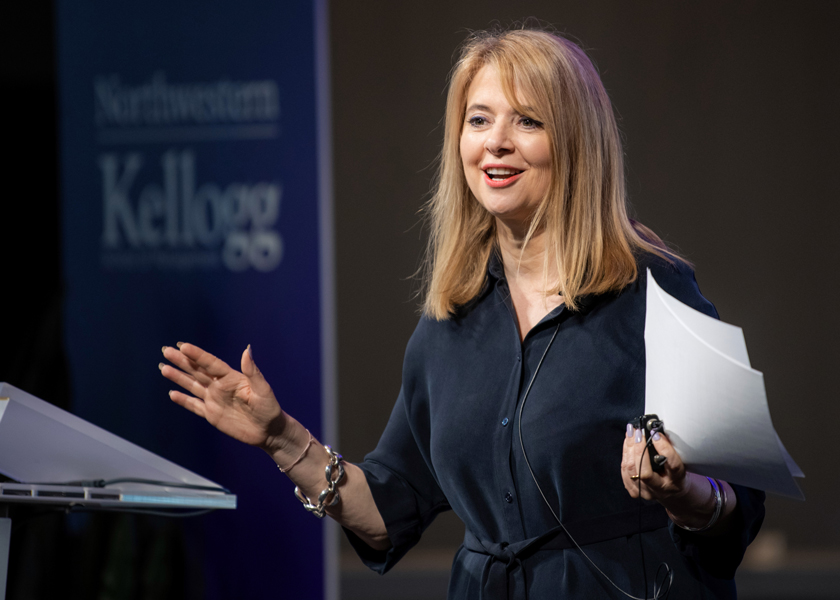
“Dean Ottino is a leader who embodies this cross-disciplinary skill: his ability to master the complexity of his discipline and then to transcend it and bring insights in the world of art is not common. That ability to go beyond a single discipline is what made him such a trusted partner in finding a common mission for Kellogg and McCormick.”
A Guiding Philosophy: Whole-Brain Engineering
Exploiting these new networks led to the refinement of what would become Northwestern Engineering’s defining philosophy: whole-brain engineering.
Whole-brain engineering integrates the elements of left-brain thinking—analysis, logic, synthesis, and math—with the kind of right-brain thinking that fosters intuition, metaphorical thought, and creative problem-solving. To lead effectively, Ottino believed, engineering students and faculty needed to master both.
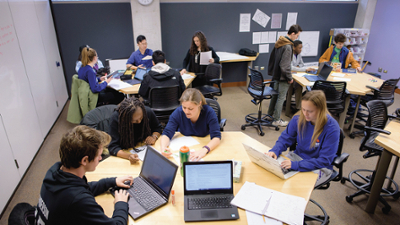
For Ottino personally, whole-brain thinking came naturally. In addition to his successful research career, Ottino was also a painter. He used his skill to understand and illustrate the patterns that emerge in chaotic flows, including creating all of the handdrawn images in his first book. Thinking creatively was in his DNA. But he found that engineering often attracted analytical thinkers who often had a tough time considering different possibilities, who often converged too quickly onto an idea. Creative thinking—questions or ideas that didn’t fit neatly into boxes—did not jibe with their mental libraries.
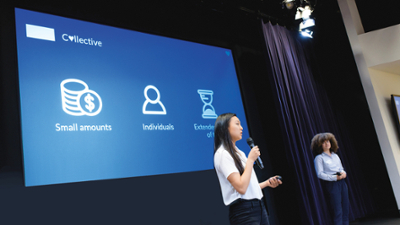
When he became dean in 2005, Ottino set out to change that. Again, Segal and Farley proved to be leading indicators of the possibility of a whole-brain engineering vision. Design thinking, especially in the first-year course Design Thinking and Communication, taught undergraduate students the hallmarks of brainstorming, iterating, and testing ideas. It also taught them the importance of working in teams, an essential element in Farley’s NUvention courses, which brought together students from several schools to commercialize ideas and technologies.
I found that if you want to change the culture of the place, you start with the undergraduate students, who are the group open to change, since it changes every four years. Through these efforts, our students emerge as whole-brain thinkers who are successful at working in teams. They understand the augmentation of thinking that happens when different domains are connected.
Julio M. OttinoDean, Robert R. McCormick School of Engineering and Applied Science
Exemplifying the philosophy were courses, assessments, and resources designed to encourage leadership, personal development, and collaboration. “I found that if you want to change the culture of the place, you start with the undergraduate students, who are the group open to change, since it changes every four years,” Ottino says.
“Through these efforts, our students emerge as whole-brain thinkers who are successful at working in teams. They understand the augmentation of thinking that happens when different domains are connected.”
A Connected Culture
Throughout Ottino’s tenure as dean, this whole-brain engineering vision, along with a collaborative mindset, has made Northwestern Engineering one of the most connected schools at Northwestern. Not only does McCormick have research or educational connections with almost every other school at the University, it also collaborates with Argonne National Laboratory, Shirley Ryan AbilityLab, and the Art Institute of Chicago. Beyond the United States, McCormick has expanded its global footprint, creating many new international partnerships, including most recently with institutions in Israel.
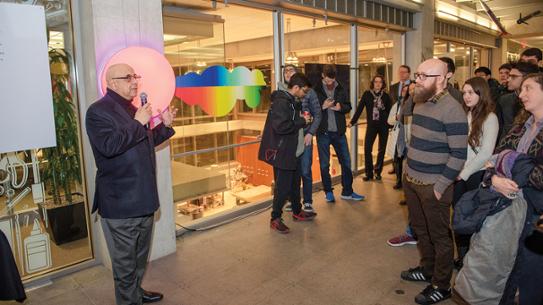
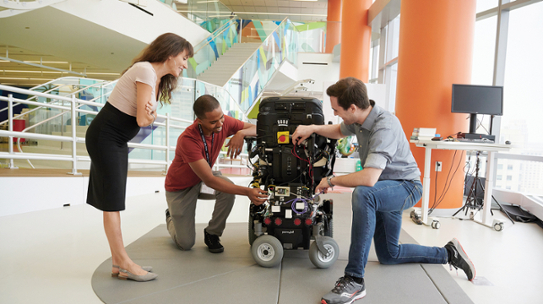
One particularly fruitful whole-brain collaboration has been with Northwestern’s Block Museum of Art. What began as a series of talks by artists to the Northwestern Engineering community evolved into the Artist-at-Large program. Since 2018, artist Dario Robleto has visited campus regularly, meeting with faculty and students to give presentations on his work and finding intersections that could benefit both art and engineering. Robleto’s time at McCormick culminated this spring with an exhibition of his work at the Block Museum.
“During Dean Ottino’s tenure, the Block Museum and McCormick have developed a collaboration of unprecedented depth, founded on the value of embracing the unknown as part of the journey that leads to innovation and opens pathways within the imagination,” says Lisa Graziose Corrin, Ellen Philips Katz Executive Director of the Block Museum.
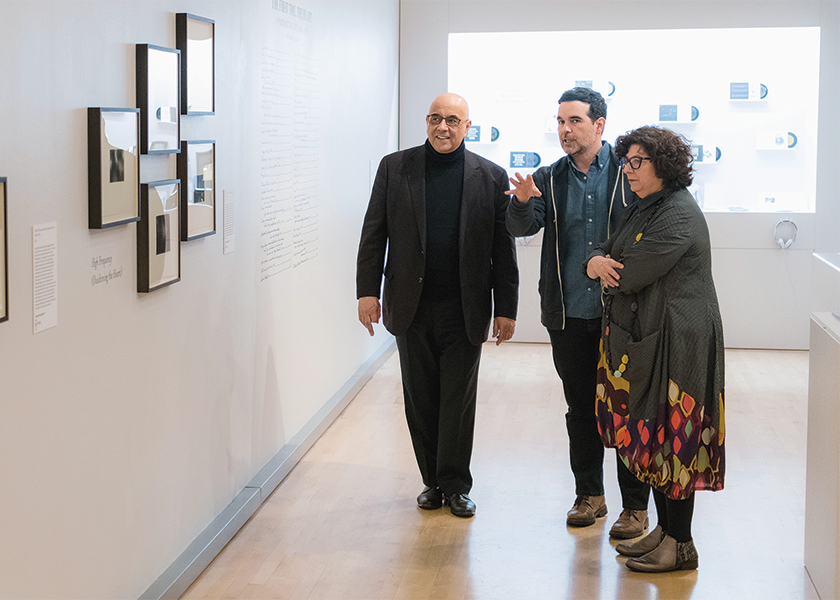
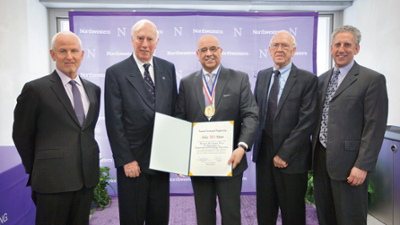
“Through the cultivation of partnerships like ours, Julio has reinforced for the entirety of the Northwestern community that transformative innovation can happen at the intersections of usually distinct academic disciplines and modes of creativity and inquiry.”
Ottino has received many research accolades throughout his tenure, culminating in his election to the National Academy of Sciences in 2022. In 2017, Ottino received the Bernard M. Gordon Prize for Innovation in Engineering and Technology Education from the National Academy of Engineering. The nation’s highest prize for engineering, the Gordon Prize recognizes leaders in academia who have developed new educational approaches to engineering. The award capped off Ottino’s original vision, which now sets the stage for the next dean.
As Ottino steps down to focus on research and the wealth of possibilities and ramifications opened by his new book, The Nexus, he hopes the school retains at least one piece of his legacy.
“Connectivity is essential,” he says.
